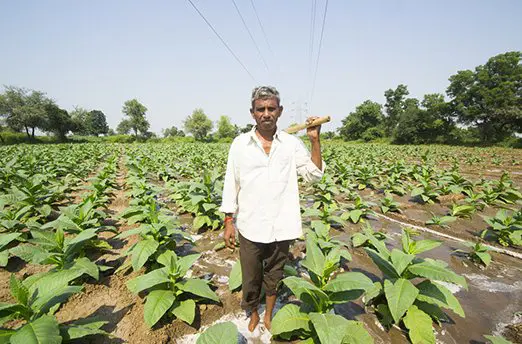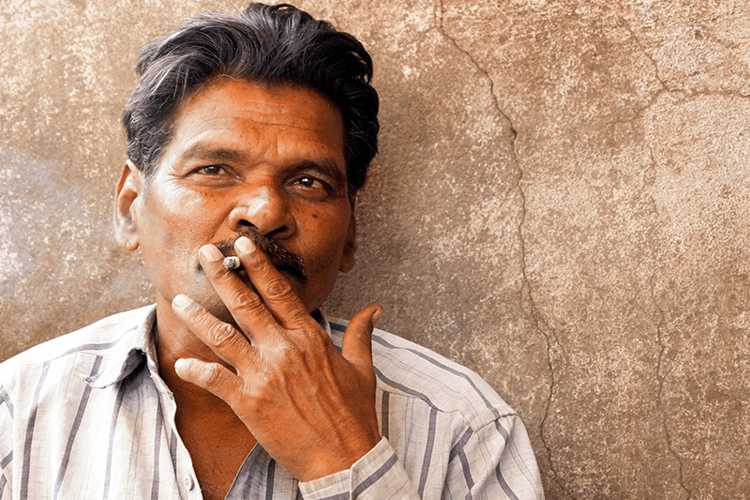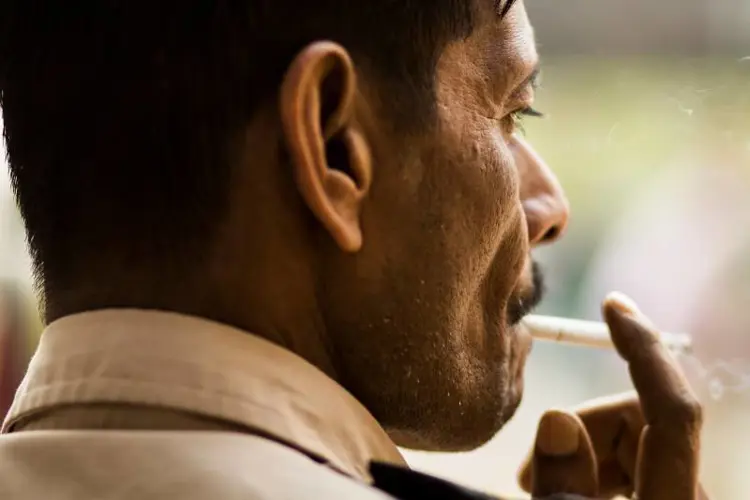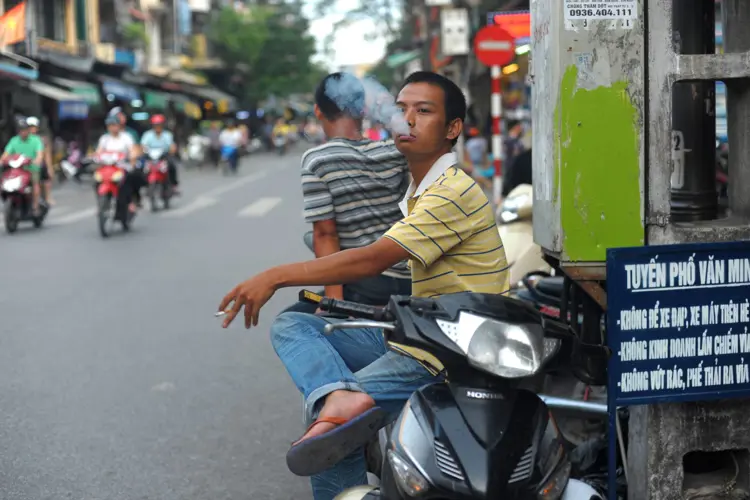I am here to tell you about the befuddling case of India, where conventional wisdom meets the brick wall of staggering numbers and skewed tobacco policy. The country is the second largest consumer of tobacco in the world: India spends $22 billion a year on tobacco-related illnesses, 120 million Indians smoke, and 900,000 die from tobacco use each year. Surely, nearly a million annual deaths should spur the state to seriously consider preventive measures through harm reduction.
Quite the opposite is happening though. Five Indian states have banned vaping, some others are leaning towards it, and a few days ago Union health minister JP Nadda stated in Parliament that the government is considering a national ban on electronic cigarettes. Why is this happening? Why is a country that hasn’t shied away from embracing technology trying to stub out a technological solution that can save millions of lives?
A key reason, not surprisingly, is economic. According to the latest GATS survey, although 29 percent of Indians use tobacco in some form, only four percent of them smoke cigarettes, comprising barely 11 percent of the total tobacco consumption. The other 89 percent is made up of a large portfolio of smokeless products, along with a hand-rolled cigarette known as ‘bidi’. This is unlike most parts of the world where cigarettes account for over 90 percent of tobacco consumption.
One would expect tobacco tax to be distributed through the segment, but wrong again. Smokers, who make up such a tiny portion of total tobacco users, pay 87 percent of the $5.3 billion annual tobacco tax, making cigarettes in India among the costliest in the world. As a percentage of per capita GDP, cigarette taxes in India are almost 14 times higher than in the USA, nine times higher than Japan and almost seven times more than China. Cigarette smokers are thus India’s cash cow despite being proportionately small in number, and anything that risks upsetting this apple cart invites resistance.
Then there is the issue of livelihoods. Farmers form the core of India’s still largely agrarian economy, and India is the second largest producer of tobacco in the world. The industry sustains 45 million livelihoods and the tobacco crop yields among the richest dividends. No surprise then that Karnataka, the state which produces the most flue-cured tobacco, the variety used in cigarettes, was the first to impose an outright ban on vaping.
None of this, however, is an excuse to continue letting millions die. It is unconscionable, and also bad economics. Instead of relying on cigarette smokers to subsidise the habit for other tobacco users and denying them access to safer products, the state should be looking at spreading out the tax burden so the benefits of prohibitionary pricing (if it works) are felt by all, exploring harm reduction avenues for all the categories, snus included, and figuring out ways to transition tobacco farmers and the industry to other sources of income.
But this requires political will and recognising that options exist. Which is where the World Health Organisation (WHO) crash lands onto the scene with a planeload of 'the evidence is not clear’ mistruths and ‘Big Tobacco is evil’ agenda, cheered on by public health officials who rely on the WHO for funds and validation, and a government reluctant to let go of its golden goose.
The WHO owns health policy in this part of the world by paying for a whole lot of welfare programmes, while remaining curiously unmindful of the elephants in the room – state-owned tobacco companies (the Indian government owns a 32 percent stake in the country’s largest tobacco firm, ITC). India holds the chair at the WHO’s Framework Convention for Tobacco Control (FCTC), whose notorious “countries that have not yet banned ENDS” prodding at its last Conference of the Parties (COP7) held in New Delhi in 2016 has sent the harm reduction ship hurtling towards the precipice.
Parroting this misguided sentiment, the Indian Medical Association pronounced electronic cigarettes are like any other tobacco product and just as harmful, while the anti-tobacco lobby, a section of which was caught red-handed accepting illegal funds from Bloomberg Charities, got into the act by clamoring for vape bans. Media has played a role too, publishing anti-vaping propaganda and jumping on every half-baked study they can find, driven by a moralistic urge to oppose Big Tobacco while wholly discounting the fact that vaping is still largely a people-led, grassroots movement.
The effect of this squeezing from all sides has been that vaping is yet to really take off in India, with not more than 200,000 vapers at present. These are not a cohesive lot either, most purchasing gear and e-liquids from sites abroad or from street side tobacconists who sell juices of dubious quality. Organizing a resistance in this environment has thus been an uphill task. But organize we did, and some serious work has taken place in this regard.
In June 2016 after the Karnataka ban, a few vapers got together to form an advocacy platform, Association of Vapers India(AVI), to fight back against the bans and create awareness about this safer alternative. We have since mounted a legal challenge to the vape bans in Karnataka and Jammu & Kashmir states, and are planning to intervene in a case on vaping filed in New Delhi which involves the central government. The hope is to make lawmakers aware through the judiciary that limiting choices — safer choices — impinges on the rights of citizens, especially when they are faced with dire consequences in their absence.
This will be a make or break year for India’s vapers: the central government will pronounce its verdict, and the WHO’s COP8 meeting will signal the treatment vaping is met with globally.
What India needs right now is intervention on a global scale, mostly from governments that have recognized that the problem is the nicotine delivery mechanism, but also from researchers, advocates, manufacturers and vapers who, whether they realise or not, all have a stake in the direction this country takes. We also need credible local research, effective awareness programs and strident PR to make our case. And the need for industry standards that keep these new nicotine products out of the hands of children and ensure they are safe for use cannot be overstated.
This will be a make or break year for India’s vapers: the central government will pronounce its verdict, and the WHO’s COP8 meeting will signal the treatment vaping is met with globally. Also for most Asian countries, whose vape association representatives I met recently in Bangkok as part of the INNCO (International Network of Nicotine Consumer Organisations) Asia Pacific initiative. There are peculiarities between these countries, but also a common thread of governments considering bans and intense WHO pressure, which necessitates collective pushback.
This region has the highest number of smokers in the world and needs safer alternatives the most, but it’s also where the science deniers have dug in their heels the deepest, making it ground zero for the battle to save vaping. Let us do all we can to win it.
The Freemax REXA PRO and REXA SMART are highly advanced pod vapes, offering seemingly endless features, beautiful touchscreens, and new DUOMAX pods.
The OXVA XLIM Pro 2 DNA is powered by a custom-made Evolv DNA chipset, offering a Replay function and dry hit protection. Read our review to find out more.
The SKE Bar is a 2 mL replaceable pod vape with a 500 mAh battery, a 1.2-ohm mesh coil, and 35 flavors to choose from in 2% nicotine.
Because of declining cigarette sales, state governments in the U.S. and countries around the world are looking to vapor products as a new source of tax revenue.
The legal age to buy e-cigarettes and other vaping products varies around the world. The United States recently changed the legal minimum sales age to 21.
A list of vaping product flavor bans and online sales bans in the United States, and sales and possession bans in other countries.




















